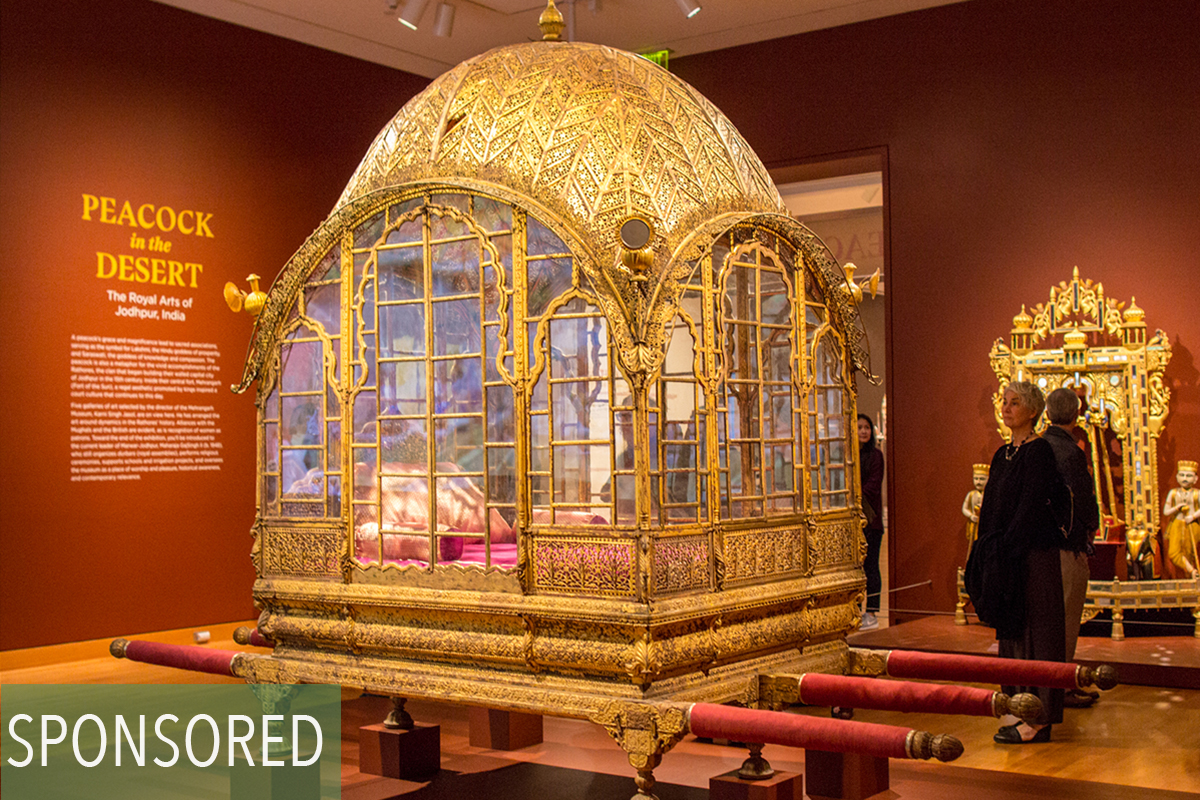
Immerse yourself in magnificent art from a great Indian kingdom in a stunning new exhibition at the Seattle Art Museum. Elephants, elegance, and an entire tent and pavilion rise up in SAM’s galleries as Peacock in the Desert: The Royal Arts of Jodhpur, India transports you across continents and time with art from the 16th to the 20th century, much of it on view in the United States for the first time.
Seattle has not seen such a unique collection of art from India since SAM’s 2009 Garden and Cosmos: The Royal Paintings of Jodhpur exhibition. Peacock in the Desert brings new loans from the same museum, the Mehrangarh Museum Trust, Jodhpur, India, to SAM once again. Garden and Cosmos comprised 56 paintings—compare this to some 250 objects on display in Peacock in the Desert, including vibrant paintings, decorative arts, detailed textiles, fine jewelry, and skillfully crafted arms and armor presented beside videos and large-scale photomurals evoking the stunning setting of the Mehrangarh Fort and its relationship to the city of Jodhpur.
Karni Jasol, Director of the Mehrangarh Museum Trust, has worked extensively to stage this immersive exhibition. He brings years of experience having watched the museum grow to be a destination for a million people per year. “A chance to work with a model of a living museum for the 21st century makes this a wonderful collaboration for SAM,” says Pam McClusky, SAM’s curatorial liaison for this exhibition.
Founded in 1460, the Mehrangarh Fort (the Fort of the Sun) went unused following Indian independence in 1947. The current Maharaja of Marwar-Jodhpur, His Highness GajSingh II, restored the fort and opened its courtyards, shrines, and palaces to the public. GajSingh donated almost 15,000 personal items to create the museum within the fort in 1974. “The fort of Jodhpur-Mehrangarh has been preserved as a record of the lives and legacy of the Rathores,” notes the Maharaja. “I look forward to sharing the artistic and cultural heritage of my country, India, and the city of Jodhpur and its people, with new audiences across North America.”
Beginning on the third floor—and continuing on the fourth floor—visitors are met by a life-size elephant mannequin adorned for a wedding procession. “This is especially fitting in reminding us that these items, some dating as far back as the 17th century, are part of ongoing traditions—that are still used in Jodhpur today,” McClusky points out.
A rare gem, the Lal Dera Tent, the only remaining tent from the Mughal era in the world, will be assembled alongside paintings, jewelry, and decorative gifts. One of the first exhibitions to examine the important role of women to the culture of the region, an entire gallery recreates the zenana of Mehrangarh, a part of the palace primarily occupied by women. As queens from across the country joined the royal court they brought people, culture, and aesthetics, transforming the zenana into a cosmopolitan hub of language, exchange, and art.
Peacock in the Desert explores the patronage of a single royal Indian dynasty in depth for the first time, to present a vision of leadership that incorporates the arts as a way to inspire the community. Don’t miss it at SAM through January 21, 2019.
For more information on ‘Peacock in the Desert: The Royal Arts of Jodhpur, India,’ visit visitsam.org/peacock.

